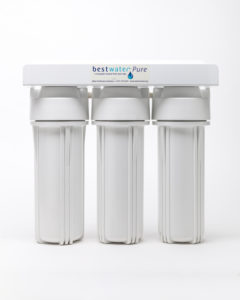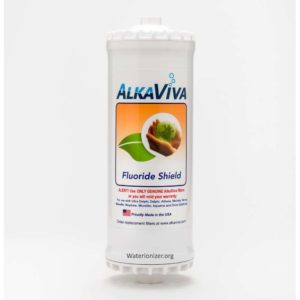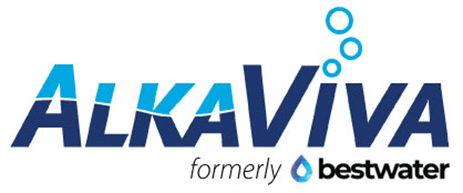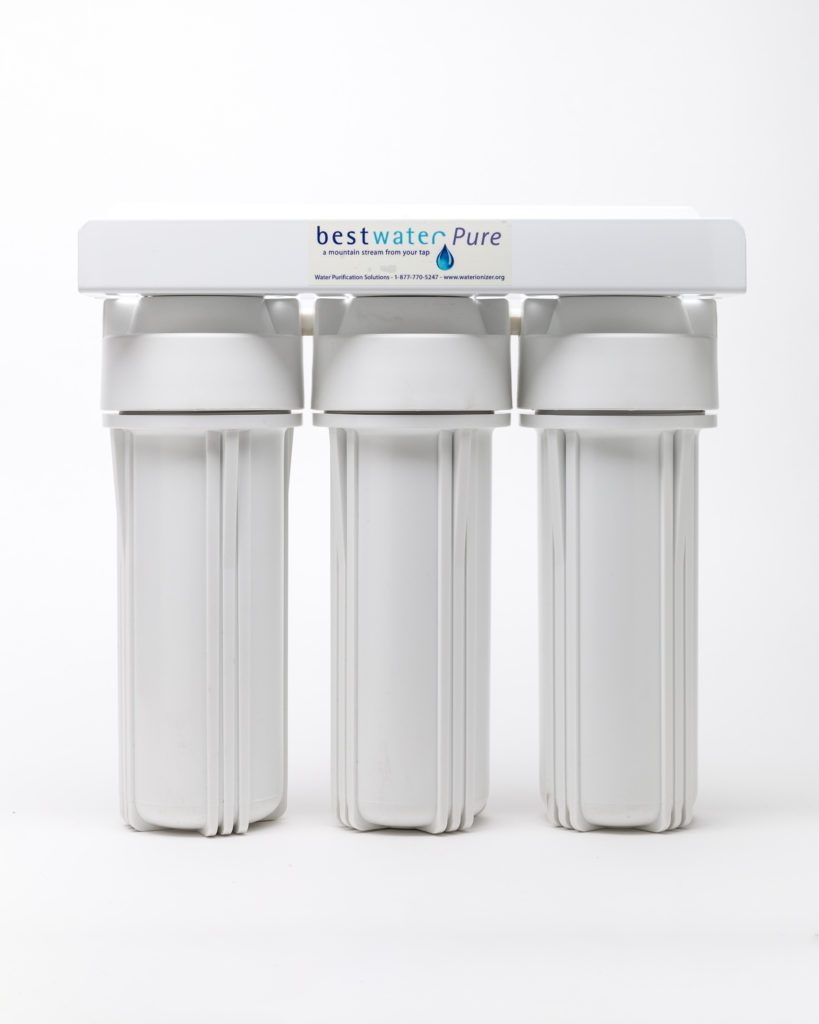Best Water Replacement Filter 3-Pack
The basic kit comes complete with everything you need including triple filter housing and manifold, filters, faucet, filter wrench, hose and a diverter valve for installation under your sink.
In the triple housing configuration, water first goes through the KDF85 filter which removes chloramine, chlorine, bacteria, iron, fungus, algae, hydrogen sulphide, most heavy metals and other contaminates. This saves the Bone Char filter for removal of fluoride, greatly extending the life of the carbon in the Bone Char filter. Finally in goes through a Coconut Carbon block which is most effective at removing chlorine, sediment, volatile organic compounds (VOCs), taste and odor from water.
USD $275.00
Description
The basic kit comes complete with everything you need including triple filter housing and manifold, filters, faucet, filter wrench, hose and a diverter valve for installation under your sink.
In the triple housing configuration, water first goes through the KDF85 filter which removes chloramine, chlorine, bacteria, iron, fungus, algae, hydrogen sulphide, most heavy metals and other contaminates. This saves the Bone Char filter for removal of fluoride, greatly extending the life of the carbon in the Bone Char filter. Finally in goes through a Coconut Carbon block which is most effective at removing chlorine, sediment, volatile organic compounds (VOCs), taste and odor from water.
These combination filters can be used :
- By itself under your sink
- Added to existing filters to further improve your drinking water
- As pre-filters for a water ionizer or other device
Other information
- Bone-Char (BC) Carbon has been used for centuries to remove naturally-occurring fluoride from water. It works similar to the way bones in the human body attract fluoride. Bone contains a porous matrix that is rich in surface ions. These can be readily replaced by fluoride and by some of the other contaminants that arrive along with fluoride (heavy metals). Bone char effectively removes a number of contaminants.
- When used alone, BC-Carbon can remove up to 90% of the fluoride in water. The efficiency of bone char can be improved by adding pre-filters that remove heavy metals and other contaminants before exposure to the BC-carbon. Bone char works best at a slightly acidic pH and may not work as well with hard water. This medium is being successfully incorporated in many systems where cartridges can be replaced as the media becomes saturated.
- Bone char removes:
| ALUMINUM | Very effective in removing soluble aluminum. Adsorption influenced by pH and retention time. Best results at ph 7 or above. | |
| ARSENIC | Largely dependent upon form of arsenic (ie. AsIII or AsV). pH has considerable influence. At low pH almost no adsorption occurs. Affected by Protonation. | |
| CADMIUM | Bone char is better than conventional precipitation and/or coagulation processes. Superior results in soft water. Retention time on par with aluminum. | |
| CHROMIUM | Much dependent upon form present, ie. cation or anion, and valency (chrome III or chrome VI). Chrome III adsorbs well. | |
| COPPER | Adsorption dependent upon pH and retention time. | |
| IRON | Dependent upon form of iron. Better results with organic iron than with inorganic. Inorganic results dependent upon valency. Short retention times suffice. | |
| LEAD | Very effective with short retention time (ie. 1 minute or less) | |
| MANGANESE | Very effective. Pilot results good. Competition from other methods of oxidation. | |
| MERCURY | Best with organic mercury. Inorganic mercury is dependent upon valency (mercury I and II). Although similar, the higher charged monatomic mercury II has a greater affinity for Bone Char than mercury I. | |
| NICKEL | Adsorption best at higher pH. Requires high retention time. At 5 pH almost no adsorption. | |
| SILVER | Quite rapidly adsorbed. Better at low concentrations in solute. High deposits of silver on bone char inhibit adsorption. Adsorption better at pH 5. | |
| ZINC | Efficiency dictated by contact time and pH. Both pilot plant and full scale plant performance good. | |
| BROMINE | Bone Char is effective in removing free bromine. Bromine form is important too. In presence of potassium and sodium adsorption decreases. | |
| CHLORINE
CHLORAMINES |
Bone Char is minimally effectively in reducing chlorine or chloramine. | |
| COLOR | Retention time required is usually about 6 – 15 minutes, dependent upon chemical make up of color. Can be used in slow sand, rapid gravity or pressure filters. | |
| FLUORIDE | Adsorption onto Bone Char is good, but influenced by pH – better at 6.5 or lower. Concentrations of fluoride present also influences performance. Activated carbons do not effectively adsorb fluoride. | |
| PESTICIDES | Good at removing organo-chlorine pesticides (ie. Dieldrin, septachlor, etc.). not very good at atrazine, etc. | |
KDF Filter – Kinetic Degradation Fluxion, or KDF:
- KDF is patented and proven to remove chloramine, chlorine, bacteria, iron, fungus, algae, hydrogen sulfide, most heavy metals and other contaminates. KDF is brass, made of 50% pure copper and 50% pure zinc. In water this produces an electro-chemical reaction that converts free chlorine into simple chlorides. Some of the harmful components are changed into harmless ones. KDF will remove more than 95% of chlorine before it hits your carbon filter, extending the life of the carbon by 15 times and letting it focus on other pollutants. The electrolytic field inhibits microorganisms and forms peroxide and hydroxyl radicals. KDF meets EPA and FDA standards for zinc and copper because the copper and zinc ions tend to reattach to the KDF media. It doesn’t remove minerals and is best used in tandem with carbon filters for truly effective filtration.
Replacement filter retail cost:
Bone Char – $64.95 CA or $49.95 USD
KDF 85 – $79.95 CA or $64.95 USD
Coconut Carbon Block – $29.95 CA or S24.95 USD
Should be replaced every 6 months in normal use.

Best Water Replacement Filter 3-Pack
USD $275.00
Related products
-

Fluoride Shield Replacement Filter for Athena
USD $89.95-
Add to cart -

Fluoride Arsenic Kit
USD $127.95-
Add to cart -

Fluoride Reduction Kit
USD $199.00 – USD $298.00Price range: USD $199.00 through USD $298.00-
Select options This product has multiple variants. The options may be chosen on the product page -

Regency II Replacement Filter
USD $99.95-
Add to cart




Reviews
There are no reviews yet.